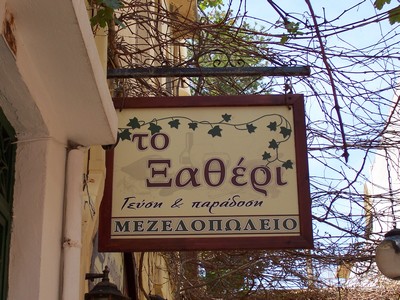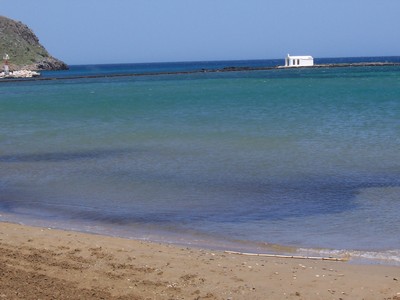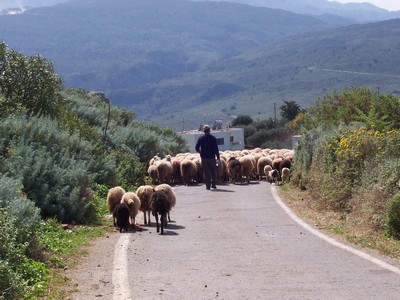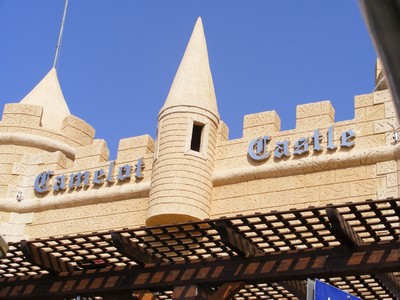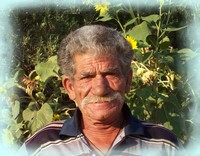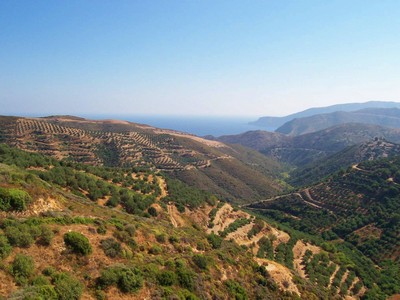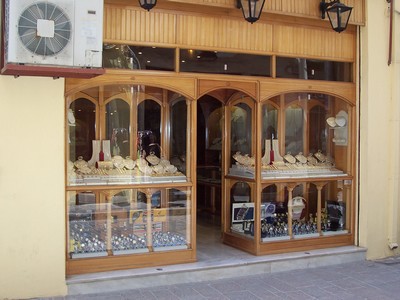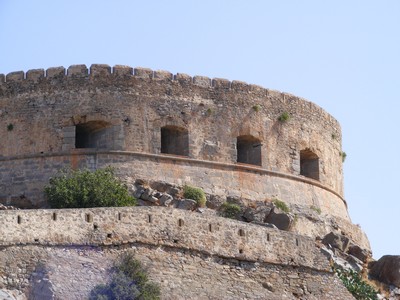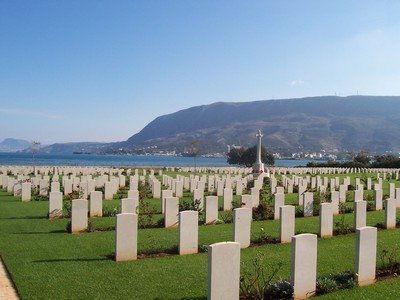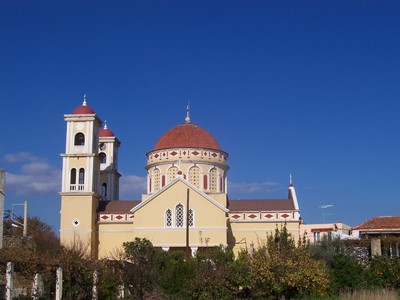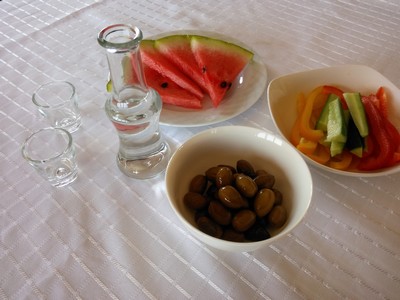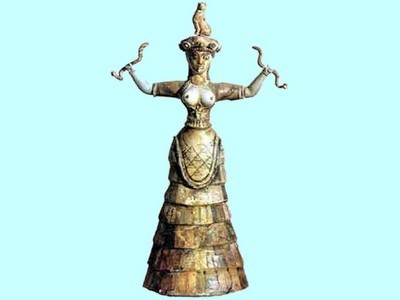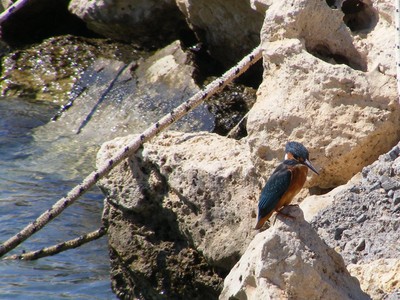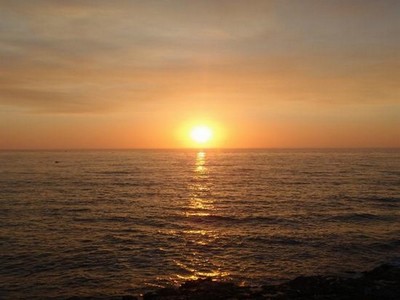Crazy about the Greek island of Crete!
White Mountains of Crete
Table of Contents
A Year in the Life of the White Mountains of Crete
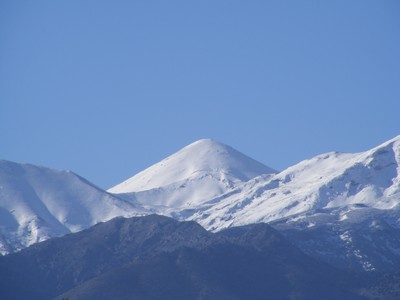
Every morning when we open our bedroom shutters we get a great view of the magnificent White Mountains of Crete that overshadow Chania. From mid December till about April or even May the White Mountains are snow capped. They remind us of the Swiss Alps and look chocolate box perfect.
Many summer visitors to Crete are surprised that we have snow topped mountains. There are a number of mountain ranges that stretch over from the east at Sitia right through to the west over at Kissamos. And all of them are snow topped in the winter month.
Mid December and suddenly the White Mountains in Crete are truly white. The weather in Crete has turned a little chilly and we woke to find the White Mountains, known as the Lefka Ori sprinkled with a smattering of snow.
As the snow melts into streams in late spring, the mountains transform again, cloaked in rugged greens and wildflowers. Summer hikes are met with aromatic herbs, buzzing bees, and jaw-dropping views. By autumn, the warm glow of the season adds an amber hue to the rocky landscape, making them a hiker’s dream and a photographer’s delight.
No matter the season, the White Mountains of Crete offer a backdrop to life on the island that’s nothing short of breathtaking. Whether dusted in snow or basking in the Mediterranean sun, they’re always ready to remind you of the natural beauty Crete has to offer—without needing to head to the Swiss Alps.
The Geography of the White Mountains of Crete

The White Mountains of Crete, or Lefka Ori, are a sprawling, dramatic mountain range that dominates western Crete’s landscape. Rising to a maximum height of 2,453 meters (Pachnes Peak), they’re not just imposing—they’re fascinating.
This range gets its name from the snow that blankets its peaks in winter and the pale limestone rock that gleams under the summer sun. These mountains are home to an astonishing 50 gorges, each carving its way through the rugged terrain like nature’s calligraphy. The Samaria Gorge, of course, steals the show as the most famous of them all, but there are plenty of lesser-known gorges waiting to be explored.
Stretching from the Mediterranean coastline to the Omalos Plateau, the White Mountains are a blend of wild beauty and geological drama. Think jagged peaks, steep ravines, and hidden caves—perfect for hikers, adventurers, or anyone who just wants to marvel at nature’s handiwork.
While the White Mountains may share Crete’s stage with Mount Ida and the Lassithi Mountains, their raw beauty and diversity make them unforgettable. Whether you’re tackling a gorge or simply admiring them from afar, they’re bound to leave an impression.
The Changing Seasons of the White Mountains of Crete
The White Mountains of Crete put on a new show with every season, and it’s a front-row seat to nature’s drama.
In Winter, the peaks live up to their name, covered in a dazzling blanket of snow that transforms the rugged landscape into a serene, icy wonderland. Snow often lingers well into spring, making the mountains a striking contrast to Crete’s sunny coastline.
By Spring, the thaw breathes life into the terrain. Wildflowers carpet the hillsides, and the gorges, like Samaria and Aradena, flow with water from the melting snow. It’s the perfect time for hikers to explore without the summer heat.
Summer strips the snow away, revealing the shimmering white limestone that gives the mountains their famous name. The trails are dry, the skies are clear, and the high-altitude air offers a cool escape from the coastal heat.
In Autumn, the golden light adds a touch of magic. Cooler days make for comfortable hikes, and the crisp air reminds you that winter is just around the corner.
No matter the season, the White Mountains of Crete are always spectacular, offering something unique for every visitor.
Exploring the Peaks and Villages of Lefka Ori

The White Mountains of Crete, or Lefka Ori as they’re called locally, offer a mix of rugged peaks and charming villages that make you feel like you’ve stepped into another world—one where time slows down, and life tastes a little sweeter.
Imagine standing atop one of the towering peaks, taking in the panoramic views that stretch all the way to the Libyan Sea. The trails here aren’t just for seasoned hikers—they’re for anyone who wants to lose themselves (but not literally) in nature. Whether you’re navigating the dramatic Samaria Gorge or strolling through gentler paths, each step feels like an adventure.
And then there are the villages. Oh, the villages! Tucked into the folds of the mountains, places like Anopolis and Aradena greet you with traditional stone houses, tiny chapels, and locals who are quick to offer a warm “Yia sou” (hello) and perhaps a sip of raki. It’s here you’ll discover the heart of Crete—a mix of ancient traditions, warm hospitality, and some of the best local cheese you’ll ever taste. Don’t miss the chance to chat with a shepherd who might just point you toward his secret shortcut or tell you tales of the mountains’ mythical past.
So lace up your walking shoes, grab your map (or a friendly guide), and get ready to experience the White Mountains of Crete, one breathtaking peak and story-filled village at a time. And who knows? You might just find yourself longing to stay longer, one cheese pie at a time.
Why the White Mountains Hold a Special Place in Cretan Life
The White Mountains of Crete are more than a dramatic backdrop—they’re deeply woven into the island’s culture, history, and daily life. These towering peaks have shaped the identity of the people who live in their shadow, and are an important symbol of freedom and resilience.
For centuries, the White Mountains served as a sanctuary for Cretans seeking refuge during invasions and uprisings. From the Ottoman era to World War II, their rugged terrain provided shelter to those fighting for freedom.
“The White Mountains are not just a place—they’re a protector and a symbol of the Cretan spirit.”
A Lifeline for Villages
The mountains are also a source of sustenance. Shepherds use the high plateaus to graze their sheep and goats, producing the famed local cheeses like graviera and mizithra. Mountain springs provide fresh water, and the wild herbs gathered here—such as thyme and sage—flavor traditional Cretan dishes.
Rooted in Tradition
The Lefka Ori are steeped in folklore and religious significance. Many remote chapels and caves in the mountains are considered sacred, hosting age-old festivals and pilgrimages. The locals’ deep respect for the mountains is evident in their stories, songs, and way of life.
The White Mountains of Crete aren’t just part of the landscape—they’re part of the soul of Crete. Whether as a refuge, a source of livelihood, or a cultural beacon, they hold a special place in the hearts of Cretans everywhere.
The White Mountains of Crete, or Lefka Ori, are a breathtaking mountain range that dominates western Crete with their rugged peaks, stunning gorges, and unique limestone landscape. Home to natural wonders like the famous Samaria Gorge, these mountains offer a blend of wild beauty and cultural significance. From snow-capped winters to flower-filled springs, the Lefka Ori transform with the seasons, making them a year-round spectacle. Rich in history, folklore, and tradition, they have been a sanctuary, a source of sustenance, and a symbol of resilience for the Cretan people. Whether you're a hiker, nature lover, or curious traveler, the White Mountains are a treasure waiting to be explored.
For more information
about the area, hiking, or nature in Crete, here's a suggestion:
Visit Greece - The Official Website for Greece
Want to discover even more of what Crete has to offer?
Explore hidden gems, must-visit spots, and insider tips below!
Just Some of the Reasons We Love Crete
Did you love this page? Please share it with your friends!
© Copyright All Original Content 2006 - 2025 Completely-Crete.com. All
Rights Reserved. Reproduction in whole or in part without permission is
not permitted.
Click here to learn about developing your own money-generating website
from Solo Build It! - even with little or no web experience!
